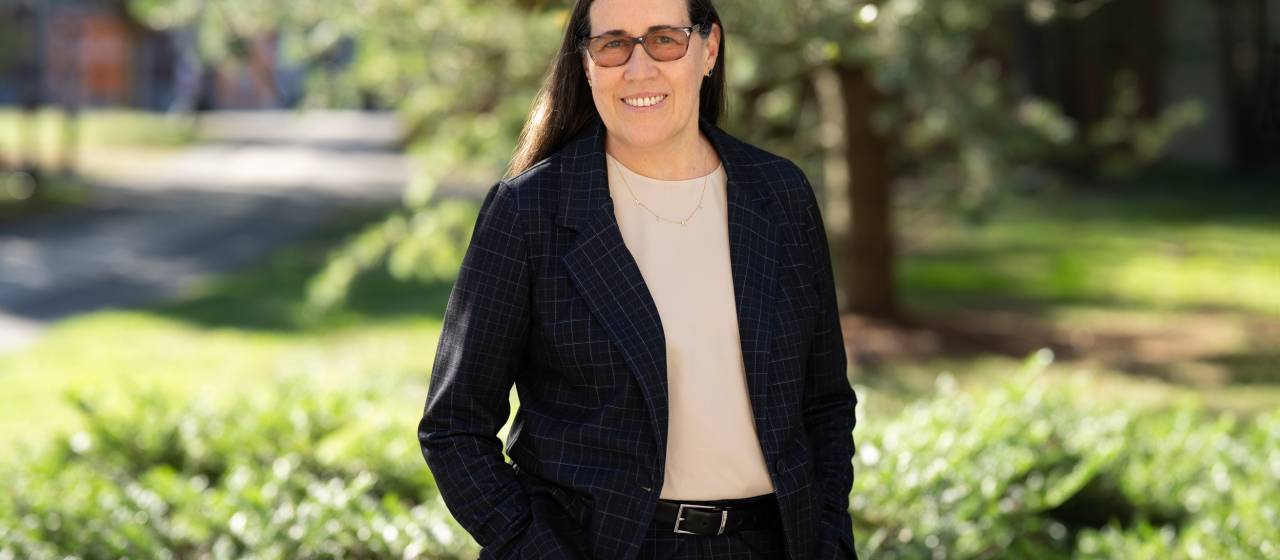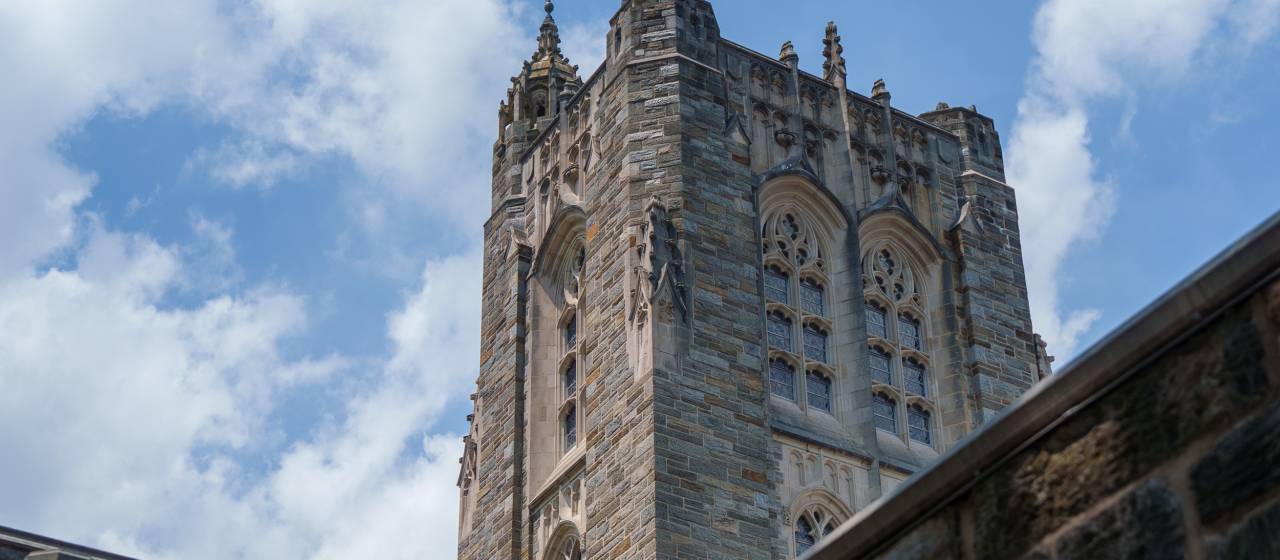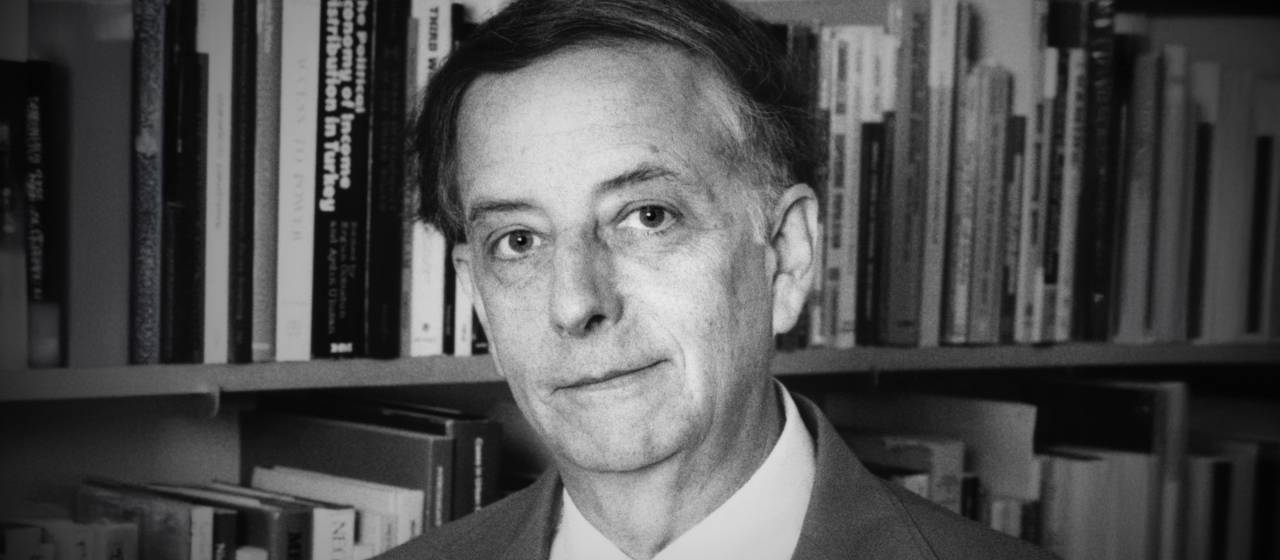Avant-garde film scholar P. Adams Sitney, ‘cartographer of the unseen,’ dies at 80
P. Adams Sitney, emeritus professor of visual arts in the Lewis Center for the Arts and one of the world’s leading experts on avant-garde film, died at home in Matunuck, Rhode Island, on June 8. He was 80 years old.

P. Adams Sitney, emeritus professor of visual arts in the Lewis Center for the Arts, in 1987
“P. Adams Sitney was inevitably the smartest person in any room he graced,” said Pulitzer Prize-winning poet Paul Muldoon, founding chair of the Lewis Center for the Arts and the Howard G.B. Clark ’21 University Professor in the Humanities. “I use the word ‘graced’ advisedly because, in addition to having a great intellect, he was the epitome of graciousness.
“My favorite story about him has to do with two sisters, one a student at Princeton and the other a student at Harvard,” Muldoon said. “The Harvard student couldn’t believe that her sister had such easy access to professors. There was one surefire way of proving it. The pair of them arrived at P. Adams Sitney’s office door at around noon. Three hours later, after regaling them on any number of topics, he announced he had to go pick up his children from school. The sisters burst out laughing and told P. Adams of their ruse. He, too, found it hilarious. That story tells us everything we need to know about this witty, wise, warmhearted man.”
Sitney joined Princeton as a lecturer in 1980, attained the rank of full professor in 1992, and transferred to emeritus status in 2016. He founded Princeton’s film studies committee and oversaw the building of a cinema — now the James M. Stewart ’32 Theater — during the renovations of 185 Nassau Street for the Program in Visual Arts.
One of Sitney’s students, photographer Indrani Pal-Chaudhuri of the Class of 2001, said, “He was more than a professor — he was a cartographer of the unseen, guiding us through dreamscapes and celluloid poems that cracked open the boundaries of perception.
“I’ll never forget the hush that fell over the room when he first played ‘Meshes of the Afternoon’ — as though time itself had paused to watch,” Pal-Chaudhuri said. “That moment, and so many like it under his rather brusque, brilliant guidance, reshaped how I look at light, movement, and meaning. His legacy is not just in the canon he championed, but in the quiet revolutions he sparked within each of us.”
Longtime colleague Keith Sanborn said, “P. Adams brought an unprecedented intellectual rigor to the understanding of avant-garde film. At a time when studies in popular culture in film were in the ascendancy, he staunchly defended film as an art, not simply in form, but in its ability to contain enduring truths.”
As a scholar, Sitney wrote three versions of “Visionary Film: The American Avant-Garde” (1974, 1980, 2002). He is also the author of “Modernist Montage: The Obscurity of Vision in Cinema and Literature” (1990), “Vital Crises in Italian Cinema: Iconography, Stylistics, Politics” (1995), and “Eyes Upside Down: Visionary Filmmakers and the Heritage of Emerson” (2008). He wrote regularly for Filmwise, The Village Voice, Film Culture, The Essential Cinema and Artforum.
“‘Visionary Film’ was a brilliant analysis of the groundbreaking films at the heart of the experimental film movement of the time,” said Su Friedrich, an emeritus professor of film production in the Program in Visual Arts. “I disagreed with some of his ideas, but that’s fair enough; no one can please everyone all the time. And I know that P. Adams wasn’t interested in pleasing people. Rather, he was deeply devoted to the works made by the many filmmakers about whom he wrote, regardless of people’s opinions about those films, and he championed them not only in his book but by his work in developing the ‘Essential Cinema’ series at the Anthology Film Archives.”
Born Aug. 9, 1944, Sitney earned his bachelor’s degree in Greek and Sanskrit from Yale in 1967 and his Ph.D. in comparative literature, also from Yale, in 1980. At various times during his undergraduate and graduate years, he took time away from his studies to lecture around the world and teach at a number of institutions, including Trinity, Bard and Middlebury colleges and Yale, Cooper Union, Cornell and New York universities.
At Princeton, Sitney taught courses in both halves of the humanities sequence — from antiquity to the Middle Ages, and from the Renaissance to the 20th century. His classes spanned the humanities, with offerings in comparative literature, visual arts and philosophy, as well as a wide range of film courses: “Magic in Avant-Garde Cinema,” “The Image of Greece in European Cinema,” “Cinema From World War II to the Present” and “Major Filmmakers.”
In 2010, he received the President’s Award for Distinguished Teaching at Princeton. “Like the beautiful and challenging films he teaches, he has a cult following,” one former student wrote when nominating Sitney for the prestigious award. One of his colleagues added, “Sitney has a vision of undergraduate education in the humanities that invites students to saturate their lives with demanding works of art and literature and with serious critical reflection on that material. This vision and devotion to it are frankly inspiring.”
Throughout his career, Sitney gave invited lectures around the world and curated film screenings at museums from Boston’s Museum of Fine Arts to Milan. His honors include the the American Academy in Berlin’s Anna-Maria Kellen Berlin Prize, as well as membership in the American Academy of Arts and Sciences.
Friedrich frequently taught with — and sparred with — the famously opinionated Sitney. “He was an endless source of hilarious stories and serious ideas about the many filmmakers whose work we knew — and differently admired,” she said.
“One of my favorite memories is a day when we stood in the hallway having a very heated argument: He was defending Tarkovsky, and I was defending Kiarostami. Both of us had brutal words to say about the other’s opinion, and neither of us persuaded the other, and I went away thinking how it was always so much fun, and so real, to be able to arm-wrestle with P. Adams about filmmakers. His unshakeable spirit is what made his life and work so wonderful and makes this loss so profound.”
Sitney is survived by his first wife, Julie, and his children Blake (Naraporn), Sky (Ulaş Karasu), Augusta and Miranda. He was predeceased by his second wife, filmmaker Marjorie Keller.
Contributions in his memory may be made to Anthology Film Archives.
View or share comments on a memorial page intended to honor Sitney’s life and legacy.













